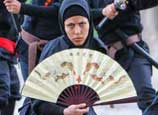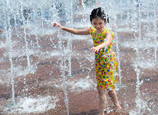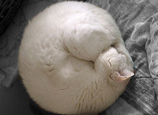
Two large color-decorated bronze chariots were unearthed in the western mound of the Mausoleum of the First Qin Emperor in December 1980. They are the oldest, largest, most complex, and the most exquisite bronze chariots that have ever been found in China so far. The bronze chariot, also known as the “crown of bronze” of ancient China, perfectly match with the terracotta warriors, adding to the attraction of the Mausoleum of the First Qin Emperor and also provided physical evidence for researching the history of the Qin Dynasty, the ancient copper smelting technology, and vehicle manufacturing techniques.
The Mausoleum of the First Qin Emperor is one of the largest and most unique and meaningful emperor tombs in the world. The terracotta warriors and horses in the mausoleum are valuable treasures of human culture comparable to the Egyptian pyramids and ancient Greek sculptures, and the discovery itself is the most spectacular archaeological achievement in China during the 20th century. They fully reflect the wonderful artistic talent of the Chinese people more than 2,000 years ago, and are also the pride and treasures of the Chinese nation.
Cultural heritage value:
One of the largest emperor tombs in the world
The Mausoleum of the First Qin Emperor is one of the largest and most unique and meaningful emperor tombs in the world and is actually a luxurious underground palace.
The eighth wonder of the world
After visiting the Museum of the Terracotta Warriors and Horses of Qin Shihuang, heads of foreign countries and scholars all believe that the discovery of the terracotta warrior and horse pit is an important discovery in the history of China’s archeology, and also in the history of the world’s archeology. It can be considered as the eighth wonder in the world and is a worldly recognized valuable cultural treasure of mankind like the Egyptian pyramids and ancient Greek sculptures.
Archaeological discovery shocks the world
More than 7,000 terracotta warriors and horses were unearthed after 1,000 years of sleep by Chinese archaeologists in 1974. This was considered as one of the wonders of mankind in the ancient times and the most spectacular archaeological discovery in the 20th century. The terracotta warriors and horses of Qin Shihuang are very rare worldwide in terms of its quantity, quality, and archaeological discoveries. They provided valuable physical materials for the in-depth research of the military, politics, economy, culture, science, and art of the Qin Dynasty in the second century BC. They are not only the art treasures of the Chinese people but also the cultural heritage of the people around the world.
A treasure house of ancient clay sculptures
The delicate terracotta warriors and horses in the mausoleum were made to imitate real life, and thus each has distinctively different gestures and facial expressions. These terracotta warriors and horses, which have distinct features and display the marked characteristics of the Qin Dynasty, reached the climax of the history of Chinese clay sculptures, adding glory to the splendid ancient Chinese culture, and is undoubtedly a glorious page of the world history of art.
 |
















 Wild Siberian tiger kills cattle in NE China
Wild Siberian tiger kills cattle in NE China


![]()
